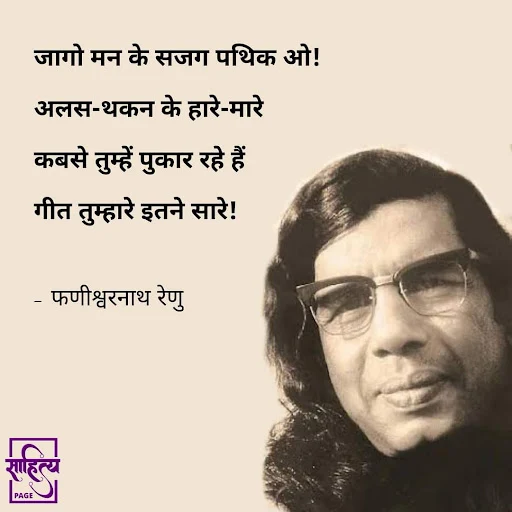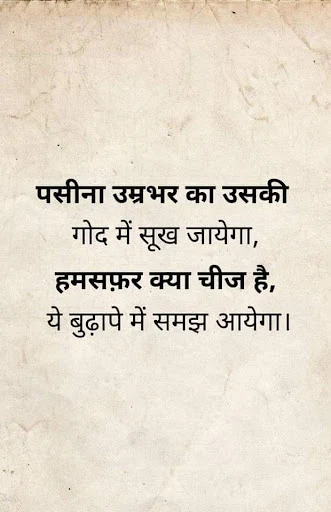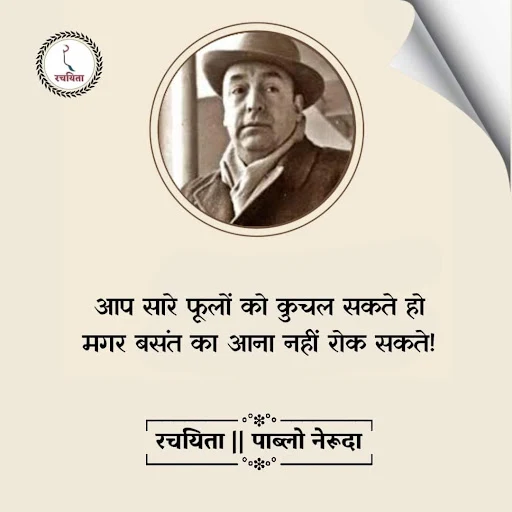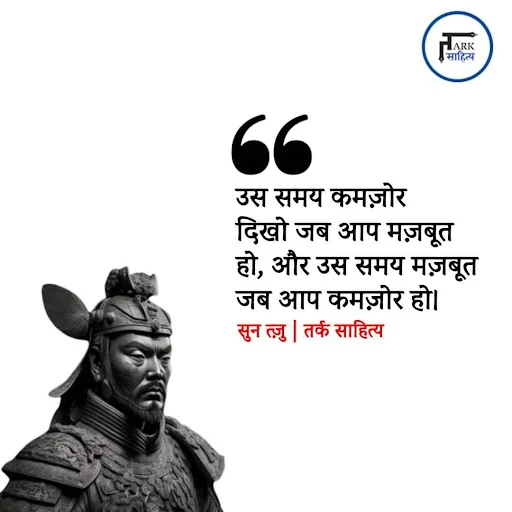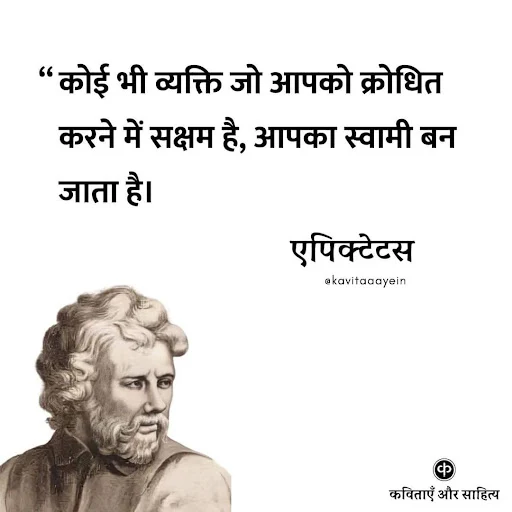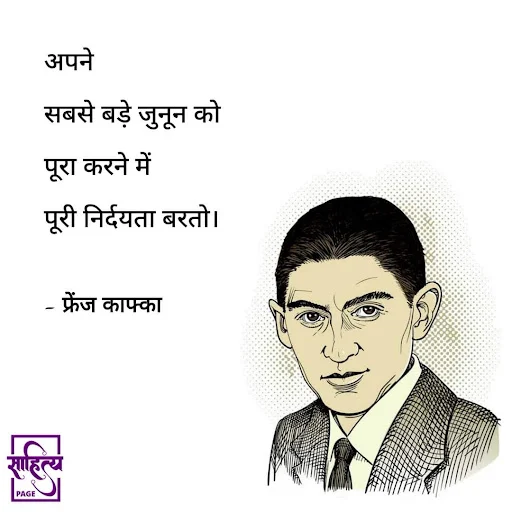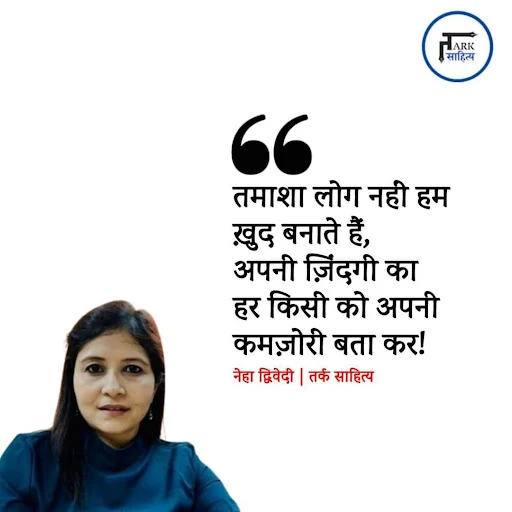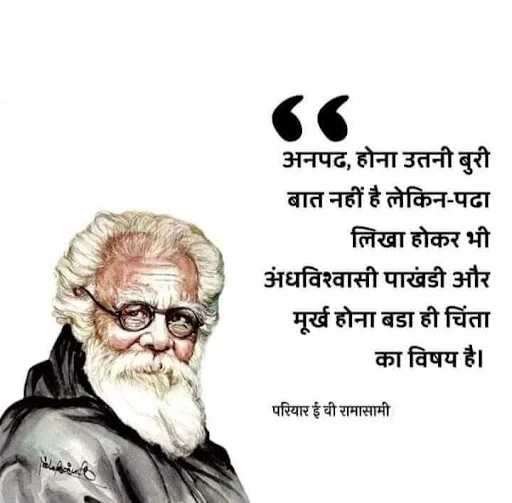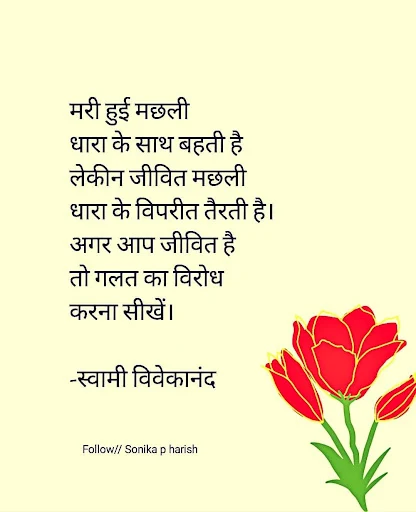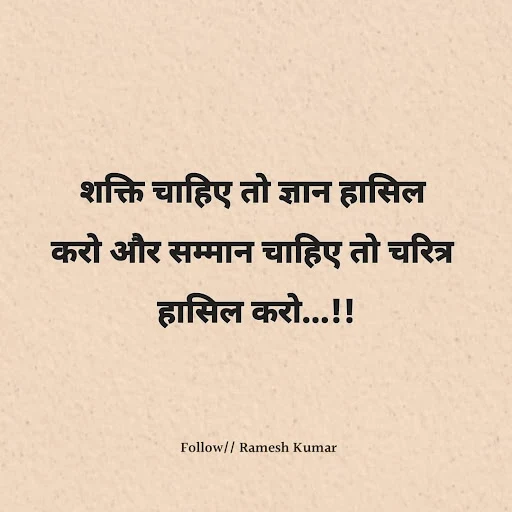जब हम जीवन में सामान्यतः से ज्यादा दबाव महसूस करते हैं या जब हमें आगे बढ़ने के लिए प्रेरित होने की जरूरत होती है, तो अक्सर हमें मोटिवेशनल उद्धरणों की आवश्यकता होती है। यहां हम आपके साथ कुछ ऐसे हिंदी उद्धरण साझा कर रहे हैं जो आपको प्रेरित करेंगे और आपके दिल को छू जाएंगे:
1. "जो लोग रुक जाते हैं, वे हार जाते हैं।" - अपूर्वा चौधरी
इस उद्धरण में बताया गया है कि सफलता को प्राप्त करने के लिए हमें कभी भी हार नहीं माननी चाहिए।
2. "जीत वही होता है जो लोग कभी नहीं हारते।" - विजय अमृत्राज
यह उद्धरण हमें बताता है कि सफलता के लिए हमें कभी भी हार नहीं माननी चाहिए, बल्कि हमें हर समय प्रयास करते रहना चाहिए।
3. "कर्म करो, फल की चिंता मत करो।" - भगवद गीता
इस उद्धरण में हमें सिखाया जाता है कि हमें अपना कर्तव्य करते रहना चाहिए और फल की चिंता नहीं करनी चाहिए।
4. "असफलता सफलता का दरवाज़ा है।" - कृष्ण मुरारी मिश्र
यह उद्धरण हमें सिखाता है कि हमें असफलता को एक अवसर के रूप में देखना चाहिए और निरंतर प्रयास करना चाहिए।
ये थे कुछ हिंदी उद्धरण जो आपको प्रेरित करेंगे और आपके दिल को छू जाएंगे। आप इन्हें अपने जीवन में शामिल करके सकारात्मक सोच और क्रियाएं बढ़ा सकते हैं।

1. हिंदी में प्रेरणादायक उद्धरण
7. उद्धरण ब्लॉगिंग: कम वॉल्यूम लेकिन उच्च CPC की कुंजीयों का चयन
9. लोकप्रिय उद्धरणों के साथ हिंदी ब्लॉगिंग
10. हिंदी उद्धरण के लिए LSI की कुंजीयों का उपयोग
प्रश्न: "हिंदी उद्धरण का महत्व क्या है?"
उत्तर: हिंदी उद्धरण हमें जीवन में प्रेरित करते हैं और हमारे दिल को छू जाते हैं। ये हमें साहस, संघर्ष और सफलता की ओर प्रेरित करते हैं।
प्रश्न: "हिंदी उद्धरण को कैसे सही समय पर उपयोग किया जा सकता है?"
उत्तर: हिंदी उद्धरण को सही समय पर उपयोग करके हम अपने जीवन में नई प्रेरणा और उत्साह पैदा कर सकते हैं। जब हमे जरुरत होती है, तो हमें याद दिलाते हैं कि कुछ नामी लोगों ने कितने मुश्किल हालातों का सामना करके अपने लक्ष्यों को हासिल किया।
प्रश्न: "हिंदी उद्धरण का सबसे महत्वपूर्ण लाभ क्या है?"
उत्तर: हिंदी उद्धरण हमें जीवन की अनगिनत सीखें देते हैं। इन्हें सुनकर हम अपने दर्दों, चुनौतियों और संघर्षों के सामना करने की क्षमता प्राप्त करते हैं और नए ऊँचाइयों की ओर बढ़ते हैं।
प्रश्न: "क्या हिंदी उद्धरण हमारे मानसिक स्वास्थ्य को सुधार सकते हैं?"
उत्तर: हां, हिंदी उद्धरण हमारे मानसिक स्वास्थ्य को सुधार सकते हैं। ये हमें प्रेरित करते हैं, हमें संघर्ष के साथ सामना करने की क्षमता प्रदान करते हैं और हमारे आत्मविश्वास को बढ़ाते हैं।
प्रश्न: "कौन से हिंदी उद्धरण विचारों को हमें नए दिशानिर्देश और प्रेरणा प्रदान करते हैं?"
उत्तर: कुछ हिंदी उद्धरण जैसे कि "जो लोग रुक जाते हैं, वे हार जाते हैं", "कर्म करो, फल की चिंता मत करो", और "जीत वही होता है जो लोग कभी नहीं हारते" हमें नए दिशानिर्देश और प्रेरणा प्रदान करते हैं।










